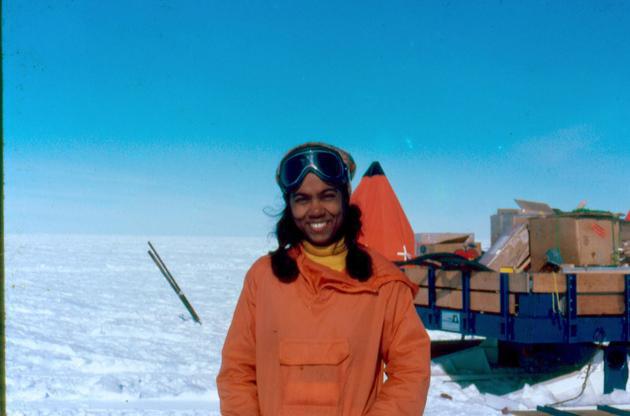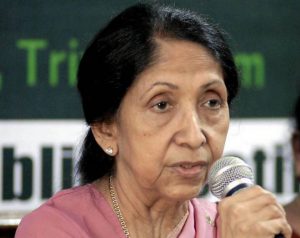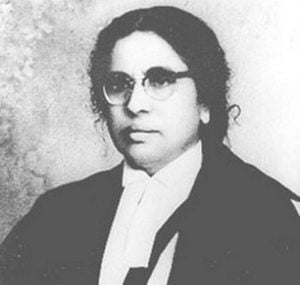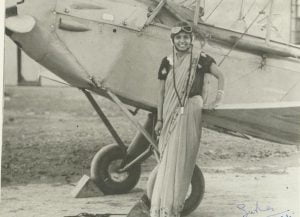During my formative years, names of women like Kalpana Chawla and Sunita Narain stood out in the media as well as at discussions at school. They were often the ambassadors of “Woah! Indian women have never done anything like that before! They have begun to step out in the world”.
Without undermining the contributions of the women mentioned above, one could find themselves on a splendid journey if they set out to discover that however patriarchal the times, there have always been revolutionary women who stood up for themselves, irrespective of their backgrounds, to make a mark in the history of humankind and more specifically, Indian history.
Most often, I feel that the stories of such radical pioneer Indian women are buried under rugs of dominant knowledge, not making it into any of the history textbooks at schools. While I continue this journey with a quest for why some lives are further hidden than others, here is a brief listicle of pioneer Indian women in our history.
1. Aditi Pant

Image Source: The Interview Portal
Aditi Pant, born in Nagpur, had a regular childhood. Have you ever come across some moments, that changed your life forever? Reading the Open Sea by Alister Hardy was one such event that happened in Aditi’s life. It not only inspired her to become an oceanographer but also become the first Indian woman to travel to Antarctica. She joined the third ever expedition to the freezing cold region that began in 1983 and ended in 1984. With that thought, while all of us can dream of the lovely white spread of snow (and some of us about skiing!), here is how Aditi described the ambience:
“The -30 degrees chill was unusual with vast space and no noise but the wind. With numb fingers and ice for water everywhere around, things can get difficult. But just studying ice core samples three metres deep can take you back a million years”.
Aditi managed to come up with a great many discoveries about the continent across a span of four months in order to set up an Indian base at Antarctica, with the likes of US, UK and Russia along with her team. On whether it is easy or difficult for women to mark their space in a territory which has not traditionally been theirs, she remarked, “We have reached a stage where we don’t need role models. We just go out and do our bit”.
2. Indira Hinduja

Source Image: The Hindu
Making conception possible for everyone was one of Dr Hinduja’s dreams. This Indian gynaecologist based in Mumbai delivered India’s first test tube baby in August 1986. Further she pioneered the Gamete intrafallopian transfer (GIFT) technique. Her concern has not only been to enable couples who desire a child to have one, but also help people cross barriers of illnesses like HIV and cancer which would otherwise hinder reproductive health and conception. She is behind the successful technology of in-vitro fertilisation due to which about 15,000 babies have been delivered.
Also read: Indian Women Are Slaying At Science, But Why Are Sexist Stereotypes Still A Thing?
She is also the recipient of many awards, amongst which Young Indian Award (1987), Outstanding Lady Citizen of Maharashtra State Jaycee Award (1987), Bharat Nirman Award for Talented Ladies (1994), International Women’s Day Award by the Mayor of Bombay (1995; 2000), Lifetime Achievement Award by Federation of Obstetrics & Gynaecological Society of India (1999), and the Dhanvantari Award by The Governor of Maharashtra (2000) are a notable few.
Dr Indira Hinduja, who first made it all happen, has rightfully earned herself a place in Indian medical history.
3. Justice Anna Chandy

Image Source: India Times
Anna Chandy (1905-1996) was the first woman in her state, Kerala, to get a law degree. During her time as a barrister, she advocated for women’s rights. A prominent activist like herself who openly discussed issues on women’s rights during her time was probably a nightmare for a lot of men around.
During her tenure as a legislator, she encountered a fellow male legislator who was against government jobs for women. She took him to the court and confronted him saying, “From the elaborate petition, it is clear that the plaintiff’s demand is to ban all efforts by women to gain employment, on grounds that they are a bunch of creatures created for domestic pleasures of men, and that their lives outside the hallowed kitchen-temples will harm familial happiness”.
She was one of the first women to demand women’s reservation.
In 1931, she contested in the election to the Shree Mulam Popular Assembly, and despite getting hostility from her competition and the media, she got elected in 1932. Anna shone in Travancore when in 1937 she was appointed as the first lady Munsif (judicial officer). There were snide comments about the capability of women to take logical decisions to which she yet again responded in a manner that inspired her fellow women (and men?):
“I was not free from trepidation when I first stepped up to the Bench. However, what was foremost in my mind was a fierce determination to make a success. I knew it was a test…if I faltered or failed.I would not only be damaging my career, but doing a great disservice to the cause of women”.
In 1948, she was elevated to the position of district judge, after which she was appointed as the first female judge in an Indian high court by the Kerala High Court on 9 February 1959 – a position she retained for nine years. She was indeed a pioneer for new hopes for Indian women.
4. Karnam Malleshwari

Image Source: Sports Star Alive
Most popularly knowns as ‘The iron girl of Andhra Pradesh‘, weightlifter Karnam Malleswari made the nation proud when she won the bronze medal at the Sydney Olympics in 2000. She was the first woman from India to do so. Malleswari remains a pathbreaking sportsperson by breaking stereotypes in a sport which is often considered ‘not a woman’s thing’ in India.
Against that stride, with her career spanning a decade, along with 11 gold and three silver medals, she has been bestowed with some of the highest honours in India including the Rajiv Gandhi Khel Ratna Award as well as the Padma Shri in 1999 and the Arjuna Award in 1994. Her passion continues as she coaches and helps more young women to take up and excel at weightlifting!
What does she have to say on her extravagant success?
“I am happy I broke the barrier…I opened the doors. Once I achieved the feat, our women athletes realised that it was possible for them to win a medal”.
Indeed, it wasn’t just the medal-winning that she was paving the path for, but an entry into the highly masculine domain of sports which is considered by men, for men, and of men.
5. Sarla Thakral

Source Image: Wikipedia
Women lack spatial reasoning, a.k.a the skill of navigating through spaces, hence they are not good drivers, or navigators, let alone pilots! Says who? Patriarchy!
When the aviation industry (and most other things) was only about men, in 1936, Sarla entered the cockpit of a Gypsy Moth and made history as India’s first lady pilot.
Born in 1914, the childhood of Sarla Thakral was spent in Delhi of undivided India. Owing to the absence of laws against child marriages, she was a child-bride at the age of 16. Luckily for her, she married into a family of pilots. And so she did not just remain in awe of the profession but went ahead, procured an aviation license, and at the age of 21 she flew an aircraft. Even the tragedy that followed – her husband’s death, did not deter her from going ahead in her career. She got further qualified after receiving a commercial pilot license and continued flying. However, her career came to an abrupt end, when the World War II broke out.
This woman is nevertheless an inspiration!
Also read: 7 Badass South Asian Artists You Should Know About
This is by no means an exhaustive or representative list. Suggestions to add to this list are welcome in the comments section.




